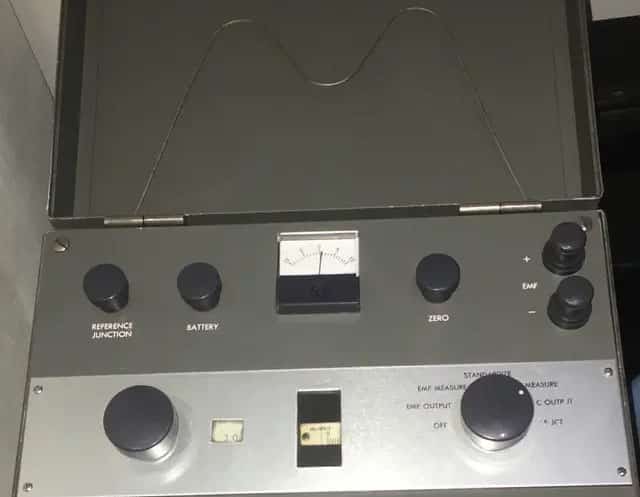
The galvanometer is used to measure the intensity of small electrical currents.
A galvanometer is an instrument used to measure the intensity of electrical currents . Its structure is based on the properties of magnetic phenomena .
Overview
Galvanometers have a needle that, by means of a spring , is linked to the axis of rotation of a coil . This coil, in turn, has a soft iron core and is located between the opposite poles of a magnet . This fixed magnet generates a uniform magnetic field , in which the coil is located.
In this way, when an electric current circulates through the coil of the galvanometer, forces are produced that make it rotate and lead it to move the needle that is linked to its axis thanks to the spring. The movement of the needle reflects, on a scale , the intensity of the current in question. Finally, when the current circulation stops, the needle returns to its original position by the action of the spring, which has a spiral shape.
Uses, recommendations and more
The galvanometer is used to detect if there is a small electric current in a circuit . If this current exists, it can also be measured. Its use occurs both at the domestic level and on an industrial scale.
It is important to keep in mind that, in the event of an electrical overload , the galvanometer can break. The damage caused by this situation is irreparable.
It should be noted that an ammeter is a type of galvanometer that has a resistance in parallel . To measure the intensity, the ammeter is connected in series with that passed through by the current.
History of the galvanometer
The physicist and chemist Hans Christian Ørsted , originally from Denmark, went down in history for having managed to isolate aluminum and for having described the relationship that exists on a physical level between electricity and magnetism. More precisely regarding the galvanometer, he was the first known person who managed to deflect the needles of a compass using current passed through a piece of wire. This took place in the year 1820.
In fact, that same year, a physicist and chemist named Johann Salomo Christoph Schweigger , first described a device that offered the same functionality of a galvanometer, at the University of Halle. Another of the most relevant names in this field is André-Marie Ampère , a physicist of French origin who made important contributions. The first tests carried out by these and other scientists achieved an increase in the effect of the magnetic field using a wire bent many times, a characteristic that inspired the name "multiplier."

The first galvanometers had to be oriented to the Earth's magnetic field
It was not until 1836 that people began to speak of a "galvanometer", following the work carried out by Luigi Galvani , a researcher from Italy who carried out several experiments to better use electric current. The first galvanometers were called "tangent" and were characterized by relying on the earth's magnetic field to reset the compass needle; it was necessary to orient them before using them. Over time, “static” ones emerged, which had a magnet located in a certain way, and could be used regardless of its orientation .
There was also the mirror galvanometer , created by the physicist and mathematician William Thomson , also known as Lord Kelvin . Its design was more fragile and did not use a needle, but rather several very small magnets that were attached to a lightweight mirror, which was held in suspension with a thread. Broadly speaking, this device deflected a beam of light, which was considerably magnified due to the currents. It was also possible to use a microscope to look at the deflection. Several more decades passed, until in 1888 the American photographer Edward Weston began to market a galvanometer with the characteristics of the current ones.
